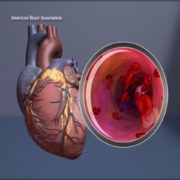NEW research shows that the risks of death from heart disease and stroke vary among Asian American subgroups, with the Filipino, Indian and Vietnamese populations facing the greatest risk.
Published in the Journal of the American Heart Association on Wednesday, March 20, the study examines the years of potential life lost due to cardiovascular diseases among the six largest Asian American subgroups compared to non-Hispanic whites.
Asians make up the fastest growing racial/ethnic group in America, increasing 72 percent between 2000 and 2015 — from 11.9 million to 20.4 million. By 2050, the American Asian population is predicted to grow to 41 million, according to the Pew Research Center, a nonpartisan research group tracking demographics and other data.
“Usually researchers combine Asian subgroups in studies, masking what might be important health differences,” said Latha Palaniappan, M.D., M.S., study author and professor of medicine at Stanford University in California. “Looking at overall death rates might not reveal that some groups are dying prematurely from heart disease and stroke.”
Palaniappan and colleagues studied U.S. death records from 2003 to 2012, examining average potential years of life lost before life expectancy in every 100,000 people in each Asian subgroup and non-Hispanic whites.
“A striking finding was that years of life lost due to stroke in women were greater for all of the Asian subgroups than non-Hispanic whites,” she said. “This tells us that stroke is a very important contributor to premature death, especially in Asian women.”
The study concluded that Filipinos and Asian Indians have the highest years of life lost because of ischemic heart disease — considered the leading cause of death in Filipino men.
Meanwhile, Filipinos and Vietnamese populations have the highest years of life lost because of cerebrovascular disease. Filipinos lost an average of 16 years of life to this disease. The most common presentation of cerebrovascular disease is an ischemic (clot-caused) stroke or mini-stroke and sometimes a hemorrhagic (bleeding) stroke.
They also found that the average age of death from heart disease was younger among the Asian Indian subgroup. Heart disease accounted for almost 25 percent of all the years of potential life lost in Asian Indians, who lost an average of 17 years to heart disease.
“One of the benefits of the study is that we’ve identified these differences among Asian subgroups. Now we can create culturally-tailored and personalized preventive programs and guidelines for each group based on its unique risks,” Palaniappan said.
Co-authors are Divya G. Iyer, B.S.; Nilay S. Shah, M.D., M.P.H.; Katherine G. Hastings, M.P.H.; Jiaqi Hu, M.P.H.; Fatima Rodriguez, M.D., M.P.H.; Derek B. Boothroyd, Ph.D.; Aruna V. Krishnan, Ph.D.; and Titilola Falasinnu, Ph.D.
The National Institutes of Health funded the study.



